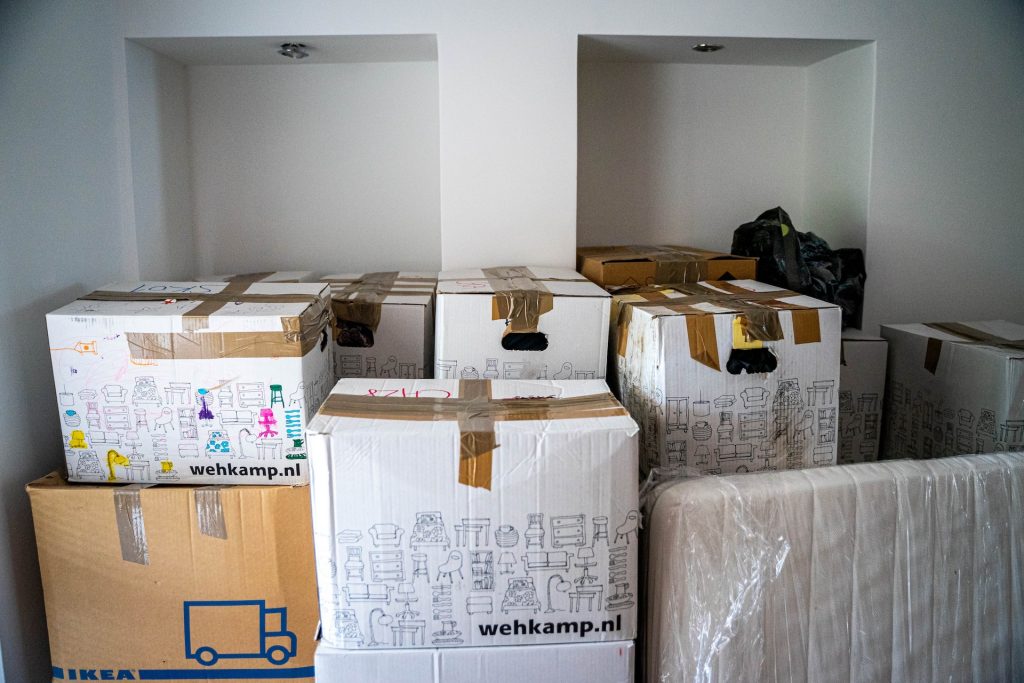Home Depot Truck Rental Cost: Everything You Need to Know
Are you planning to move or transport large items? How much will it cost to rent a truck from Home Depot? Home Depot is a well-known home improvement retailer offering truck rental services to make moving easier.
In this article, we will delve into the various truck rental options provided by Home Depot, the associated costs, and everything you need to know to make an informed decision.
How Much Does a Home Depot Truck Rental Cost?
Before we dive into the specifics, let’s get an overview of the truck rental costs at Home Depot. The rental charges typically depend on the truck’s size, the distance you’re moving, and the rental duration.
Home Depot offers truck rentals through Penske vs Uhaul trucks and its Load N’ Go service. It is typically even more affordable than the cost of PODS. We will explore the pricing for different truck sizes and distances to give you a comprehensive understanding.
12-Foot Truck Rental From Home Depot Quotes
Whether moving in Los Angeles or New York City, you may need a small truck to move throughout the crowded city. A 12-foot rental truck is typically suitable for small to medium-sized moves. It can accommodate furniture, boxes, appliances, and other household goods.
Here are some examples of the types of moves that a 12-foot rental truck can be used for:
- Studio Apartment: If you live in a studio apartment with minimal furniture and belongings, a 12-foot truck should be sufficient to handle your move.
- One-Bedroom Apartment: A 12-foot Home Depot truck rental size can generally accommodate the contents of a small one-bedroom apartment, including bedroom furniture, living room furniture, kitchen items, and boxes.
- Small Office Moves: If you are relocating a small office with limited furniture and equipment, a 12-foot truck may be appropriate for transporting your office belongings.
Here are some cost examples:
| Distance | Cost |
| 0-50 miles | $100-$150 |
| 51-100 miles | $150-$200 |
| 100 plus miles | $200-$350 |
16-Foot Truck Rental From Home Depot Quotes
A 16-foot rental truck is generally suitable for medium-sized moves. It provides more space than a 12-foot truck, making it a popular choice for individuals or families with a moderate amount of furniture and belongings. The extra capacity allows for greater flexibility when transporting items during the move.
Here are some examples of the types of moves that a 16-foot rental truck can be used for:
- Small to Medium-Sized Apartments: A 16-foot truck can handle the contents of a small to medium-sized apartment, including furniture, appliances, and boxes.
- Two-Bedroom House or Apartment: A 16-foot truck is generally sufficient to transport most of your belongings if you live in a two-bedroom house or apartment.
- College Dorm or Studio Apartment with Lots of Belongings: If you have a significant amount of belongings, even in a small space like a college dorm or studio apartment, a 16-foot truck may be an excellent option to ensure everything fits comfortably.
- Office Moves: For small office moves with a moderate amount of furniture, equipment, and supplies, a 16-foot truck can be a suitable choice.
Here are some pricing examples:
| Distance | Cost |
| 0-50 miles | $130-$180 |
| 51-100 miles | $180-$230 |
| 100 plus miles | $230-$400 |
22-Foot Truck Rental From Home Depot Quotes
A 22-foot rental truck is ideal for more significant moves, offering more space than both 12-foot and 16-foot trucks. It is a suitable option for individuals or families with more substantial furniture, appliances, and a higher volume of belongings. The extra capacity and length of the truck allow for accommodating larger and bulkier items during the move.
Here are some examples of the types of moves that a 22-foot rental truck is well-suited for:
Three-Bedroom House: A 22-foot truck can typically handle the contents of a three-bedroom house, including furniture, appliances, and multiple boxes.
Larger Apartments or Condos: If you are moving out of a larger apartment or condo, the 22-foot truck offers ample space for your belongings.
Moving with Heavy or Bulky Furniture: If you have significant furniture items or appliances that require extra space, a 22-foot truck can accommodate them more comfortably.
Long-Distance Moves: A 22-foot truck can be a practical choice for long-distance moves, especially if you need to transport more items.
Moves with Additional Items: If you are also moving items from a storage unit or have other additional belongings to transport, the 22-foot truck provides the necessary room.
Here are some examples of mileage and cost:
| Distance | Cost |
| 0-50 miles | $160-$210 |
| 51-100 miles | $210-$260 |
| 100 plus miles | $260-$450 |
Need Movers? Your Move, Your Choice

Instant Exact Cost for Your Specific Move
Agoyu’s AI technology give you quick, precise estimates. Scan your room, receive instant quotes from multiple movers, and confidently select the best option for you.
STEP 1 OF 3
or Have a Top Mover Call Me Now!
Do it the old fashion way! A top mover will call you to provide an instant quote over the phone or at your house!
26-Foot Truck Rental From Home Depot Quotes
A 26-foot rental truck is suitable for significant moves, offering the most space among common rental truck sizes. It is an excellent choice for individuals or families with substantial furniture, appliances, and many belongings. The extra length and capacity of the truck make it ideal for handling sizable household moves.
Here are some examples of the types of moves that a 26-foot rental truck is well-suited for:
Four or More Bedroom House: A 26-foot truck can typically accommodate the contents of a four or more-bedroom house, including furniture, appliances, and numerous boxes.
Large Homes with Multiple Levels: If you are moving from a large home with multiple levels, the 26-foot truck provides ample space for transporting your belongings.
Moves with Large Furniture or Appliances: If you have substantial furniture items, large appliances, or other heavy and bulky items, a 26-foot truck offers the necessary room.
Relocating with a Full Household: For families with a significant amount of belongings to transport, the 26-foot truck ensures everything fits comfortably during the move.
Long-Distance or Cross-Country Moves: A 26-foot truck is a practical choice for long-distance or cross-country moves due to its capacity and ability to transport items over longer distances.
Here is the pricing information:
| Distance | Cost |
| 0-50 miles | $200-$250 |
| 51-100 miles | $250-$300 |
| 100 plus miles | $300-$500 or more |
Load N’ Go Home Depot Box Truck Rental Costs
If you need a truck for a short period, consider Home Depot’s Load N’ Go options. Load N’ Go options are suitable for:
- Small studio or one-bedroom apartments
- Small household moves
- Local moves
- College moves
- Furniture or appliance deliveries
Here is the information regarding truck size, rental time, and cost:
| Truck Size | 75-Minute Rental | Daily Rental | Weekly Rental |
| F250 Flatbed Truck | $20 | $130 | $650 |
| T250 Flatbed Truck | $25 | $150 | $750 |
| Cargo Van | $30 | $170 | $850 |
| Box Truck | $35 | $200 | $1000 |
Alternative to Home Depot Truck Rentals
PODS are portable storage containers that allow you to store and transport your belongings during a move or renovation.
These containers are delivered directly to your location, allowing you to pack at your own pace. Once you have finished loading, the container can be stored on-site, transported to a new location, or kept at a secure PODS storage facility.
Keep in mind that PODS is another option for your truck rentals. we’ve partnered with PODS to get you a 5% discount on all their products! Click here to learn more!
How to Rent a Truck From Home Depot
Renting a truck from Home Depot is a straightforward process. Follow these simple steps to get started:
- Visit the Home Depot website or your nearest store for truck rental availability.
- Choose the appropriate truck size based on the size of your move and the items you need to transport.
- Verify the Home Depot truck rental rates and available dates for your preferred truck size.
- To book the truck, provide the necessary information, such as your identification, contact details, and payment information.
- Review the rental agreement carefully before signing to understand the terms and conditions.
- Pick up the truck on the designated rental day and ensure you return it on time to avoid additional charges.
Renting a Truck From Home Depot: Cost Factors
Several factors can influence the cost of renting a truck from Home Depot:
- Truck Size: Larger trucks generally have higher rental costs than smaller ones. Assess your needs and choose the appropriate size accordingly.
- Moving Distance: The farther you transport your belongings, the higher the rental cost may be due to mileage charges.
- Rental Duration: The rental cost varies based on whether you need the truck for a few hours, a day, or an entire week.
- Seasonal Demand: The Home Depot truck rental prices may fluctuate based on the time of year and the demand for truck rentals during peak moving seasons.
- Additional Services: If you require other services like moving supplies, dollies, or insurance coverage, these may incur extra charges.
Pros of Renting a Truck From Home Depot
Renting a truck from Home Depot offers several advantages:
- Convenience: Home Depot locations are widespread, making finding a rental truck near you easy.
- Variety of Truck Sizes: Home Depot provides a range of truck sizes, allowing you to choose one that best fits your moving needs.
- Flexibility: You can rent a truck for different durations, from short local moves to longer interstate journeys.
- Well-Maintained Trucks: Home Depot ensures their rental trucks are well-maintained and in good condition.
Cons of Renting a Truck From Home Depot
Despite the benefits, there are a few drawbacks to consider:
- Limited Availability: During peak moving seasons, rental trucks may be in high demand, limiting availability.
- Additional Fees: Depending on your rental agreement and the services you require, there may be extra fees beyond the base rental cost.
- Insurance Costs: While Home Depot offers insurance coverage, it adds to the overall rental expense.
Home Depot Truck Rental Cost: FAQs
Do Load N’ Go rentals from Home Depot have unlimited mileage?
Load N’ Go rentals from Home Depot typically have unlimited mileage. You will be charged based on your travel time and not the mileage. Most moving companies will charge you a mileage rate.
What insurance coverage options does Home Depot offer for truck rentals?
Home Depot offers Limited Damage Waiver, Personal Accident Insurance, and Supplemental Liability Insurance. Reviewing your auto insurance policy before purchasing additional coverage is advisable. Paying for insurance coverage is often a hidden cost of moving to be aware of.
What types of rental trucks does Home Depot offer?
Home Depot provides a variety of rental trucks, including box trucks, cargo vans, and flatbed trucks, through its Load N’ Go service. Additionally, they offer Penske trucks ranging from 12 to 26 feet.
Conclusion
Renting a truck from Home Depot can be a cost-effective and convenient solution for your moving needs. By considering factors such as truck size, rental duration, and moving distance, you can estimate the overall cost and choose the best option for your requirements.
While renting a truck from Home Depot has pros and cons, the availability of various truck sizes and the widespread locations make it a popular choice for many movers. Review the rental agreement and consider insurance coverage options for added peace of mind.
The Agoyu moving app can make your move as stress-free as possible. You can compare the rates and reviews of the best moving companies in your area. Check out the Agoyu app today to help you prepare for your move.

















